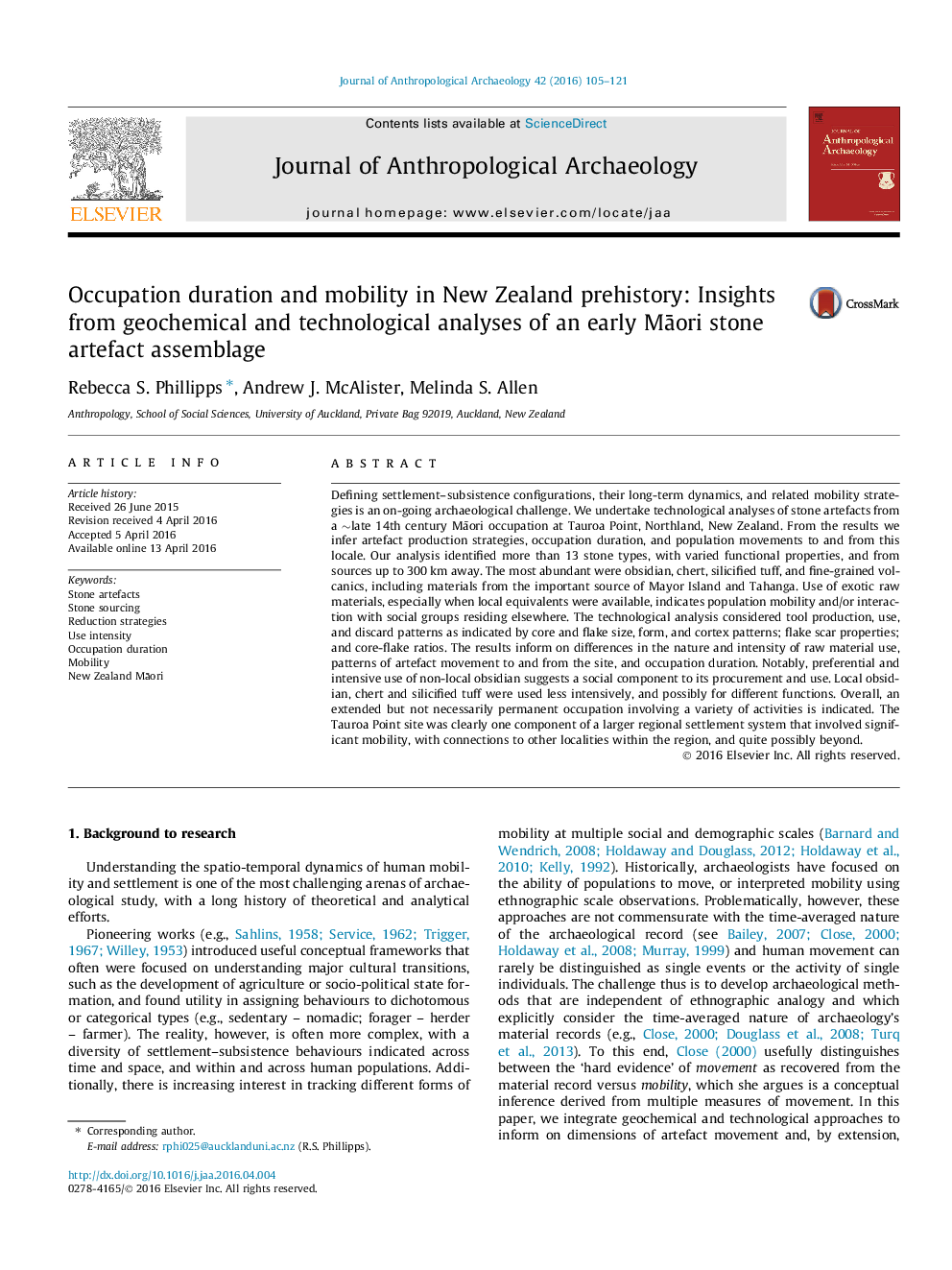| Article ID | Journal | Published Year | Pages | File Type |
|---|---|---|---|---|
| 1034862 | Journal of Anthropological Archaeology | 2016 | 17 Pages |
•We apply a combination of sourcing and technological analyses to stone artefacts.•We show a range of raw material utilised from different parts of New Zealand.•We suggest obsidian was used more intensively than other raw materials.•We suggest occupation duration that is extended but not permanent.
Defining settlement–subsistence configurations, their long-term dynamics, and related mobility strategies is an on-going archaeological challenge. We undertake technological analyses of stone artefacts from a ∼late 14th century Māori occupation at Tauroa Point, Northland, New Zealand. From the results we infer artefact production strategies, occupation duration, and population movements to and from this locale. Our analysis identified more than 13 stone types, with varied functional properties, and from sources up to 300 km away. The most abundant were obsidian, chert, silicified tuff, and fine-grained volcanics, including materials from the important source of Mayor Island and Tahanga. Use of exotic raw materials, especially when local equivalents were available, indicates population mobility and/or interaction with social groups residing elsewhere. The technological analysis considered tool production, use, and discard patterns as indicated by core and flake size, form, and cortex patterns; flake scar properties; and core-flake ratios. The results inform on differences in the nature and intensity of raw material use, patterns of artefact movement to and from the site, and occupation duration. Notably, preferential and intensive use of non-local obsidian suggests a social component to its procurement and use. Local obsidian, chert and silicified tuff were used less intensively, and possibly for different functions. Overall, an extended but not necessarily permanent occupation involving a variety of activities is indicated. The Tauroa Point site was clearly one component of a larger regional settlement system that involved significant mobility, with connections to other localities within the region, and quite possibly beyond.
